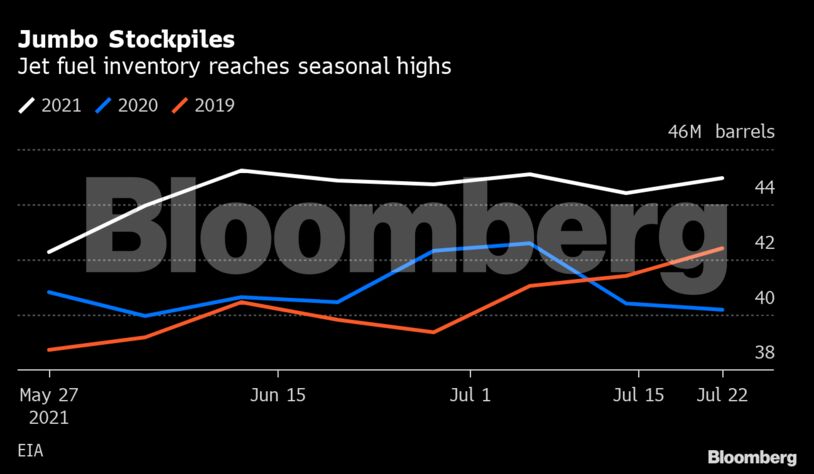
“Traffic data is a false flag for the jet fuel market,” said Zachary Rogers, director of global oil service at Rapidan Energy Group. “The real metric is the quantity of international flights, which at this point has barely recovered, and there are looming headwinds.”
U.S. to U.K. Travel Warning Prolongs Jet Pain: BNEF
The best indicator of the market mismatch is the widening gap between jet fuel and diesel. Typically the two products trade within a nickel of each other but currently physical jet fuel is 18 cents a gallon less in the U.S. Gulf Coast refining hub. Most analysts say a 10-cent spread would point to the beginning of a recovery in jet fuel markets.
“Meeting gasoline demand meant swamping the market with jet fuel, which bled into the diesel pool, as refiners can only minimize middle distillate supplies to a certain extent,” said Linda Giesecke, manager of global fuels at ESAI Energy.
Most forecasts for the recovery in aviation place the return to pre-2020 conditions at next year or later. JPMorgan Chase & Co. analysts wrote in a recent note that world jet fuel consumption will be at 80% of normal after next winter.
Some airlines are still advising caution over the travel comeback, with Southwest Airlines Co. and American Airlines Group Inc. reining in optimism this week. The return of vital international business trips remains cloudy, with flights still restricted from much of Europe and the U.K. as the delta variant gains ground.
The big gains in jet fuel demand already have been made, said Rebecca Babin, senior energy trader at CIBC Private Wealth, US. The market will continue to move toward firmer footing, but the rate of change may slow, she said.
“I feel like the market really is anticipating still significant improvements, and I think they might be a little smaller than that,” she said.
Share This:




 CDN NEWS |
CDN NEWS |  US NEWS
US NEWS 





























Trump Is Scaring Republicans Away From Saving the Planet